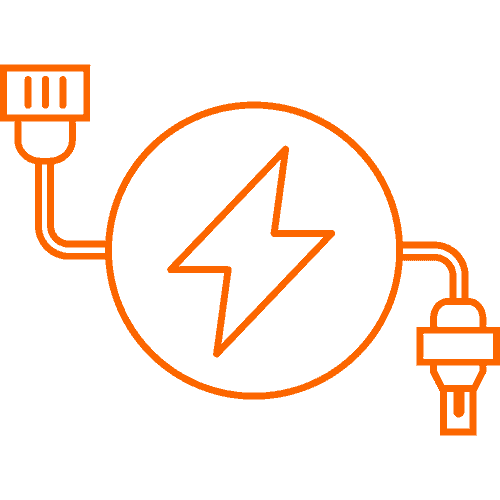
The Roles and Responsibilities of Electronic Control Units in Heavy Equipment

The Roles and Responsibilities of Electronic Control Units in Heavy Equipment
Reading time: 5 min 30 sec
Introduction to Electronic Control Units
As construction equipment becomes increasingly complex, new systems have emerged that leverage digital technologies to monitor, control and regulate a machine’s mechanical components.
Electronic Control Units (ECUs) are onboard electronic systems used in modern construction equipment to control a machine’s various systems and subsystems. ECUs have become indispensable in managing and optimizing machine performance.
ECUs are known by several names, depending on the particular type of technology used. While “ECU” is broadly used, the term “Engine Control Unit” is also used when referring to the specific module that governs the function of the engine. “Electronic Control Module” (ECM) is another term that refers to the same class of components.
Whether referred to as an ECU, ECM or engine control unit, these devices are central to the modernization of construction equipment, facilitating the integration between mechanical components and digital control technologies.
In this guide, we’ll explore the roles and responsibilities of ECUs in modern construction equipment. Understanding these electronic components is crucial for operators and fleet managers who maintain heavy equipment fleets.
The Basic Roles and Advancements Enabled By ECUs
An Electronic Control Unit (ECU) acts as the “brain” of heavy equipment. The ECU is an electronic device embedded within the machine to control its mechanical systems and processes.
The ECU receives data from a network of sensors placed throughout the equipment, processes this information and then uses it to execute commands that optimize the machinery's performance.
A typical ECU is made up of several key components. Usually, a microcontroller or microprocessor sits inside the ECU and executes software instructions. Just like in laptop computers, this process is supported by memory units that store the operating software and temporary data.
Input/output interfaces allow the ECU to communicate with the equipment’s sensors and actuators. These sensors might include temperature sensors, pressure sensors, proximity sensors and speed sensors, which continuously monitor the condition of the equipment and its environment. The ECU interprets data from these sensors to make real-time decisions.
In construction equipment, the ECU operates by continuously gathering data from the equipment’s sensors, analyzing this data and adjusting the equipment’s operations accordingly. For example, it can adjust the fuel injection rates for optimal combustion or modify hydraulic pressure based on the load.
By optimizing operations like engine performance, fuel consumption and hydraulic fluid management, ECUs enable machinery to perform at peak efficiency. This optimization also leads to less wear and tear on the machine, extending its service life.
An ECU's ability to run diagnostics and monitor the health of equipment is another key feature for fleet managers. It can predict failures before they occur, allowing for preventive maintenance that avoids costly downtime. Real-time monitoring ensures that machinery is operating within safe parameters, and alerts can be sent out if anomalies are detected.
Safety is another crucial area where ECUs have revolutionized the heavy equipment industry. Features such as automatic shutdowns in the event of critical failures, emergency response systems and stability control are all governed by ECUs. These systems can prevent accidents by taking immediate action in dangerous situations or by providing operators with warning messages.
Overall, the role of ECUs in modern construction equipment cannot be overstated. They are at the heart of advancements in efficiency, productivity, diagnostics and safety; driving the evolution of heavy machinery towards smarter and more sustainable operation.
Key Applications of ECUs in Construction Equipment
Not all construction equipment features Electronic Control Units (ECUs), but their prevalence is growing. The types of equipment that commonly incorporate ECUs include cranes, loaders, material handlers, excavators and other advanced machinery.
Cranes
In cranes, ECUs play a crucial role in managing load control systems and stabilizing the crane during operations. They ensure precise movement and placement of loads.
Loaders
For loaders, ECUs are essential to engine management systems, optimizing fuel efficiency and power output. They also control hydraulic systems for better handling and movement of materials.
Material Handlers
In material handlers, ECUs manage the exchange between hydraulic systems and the machinery's engine, ensuring smooth operation and precise control over the handling of materials.
Excavators
Excavators benefit from ECUs through improved control over their hydraulic systems, allowing for precise digging and material removal. ECUs also manage the engine for optimal power and efficiency during operations.
Specific roles of ECUs in these types of construction equipment include:
Engine Management Systems:
- ECUs optimize engine performance, adjusting fuel injection and timing to maximize power output while minimizing fuel consumption and emissions.
Hydraulic Control Systems:
- By managing the flow and pressure of hydraulic fluids, ECUs enable precise control over machinery movements.
Transmission Controls:
- For equipment with complex transmission systems, ECUs adjust gear shifts to optimize power and efficiency.
Telematics:
- ECUs are central to the telematics systems in construction equipment, facilitating the remote monitoring of machine health, usage and location.
Other Applications:
- ECUs also find applications in safety systems, implementing features like automatic emergency shutdowns, anti-collision systems and stability controls.
An ECU's Relationship with Other Components
ECUs form a network within the piece of heavy equipment that allows communication between both mechanical and electrical components. They interpret data from various sensors embedded throughout the machinery, controlling actuators that adjust mechanical parts like valves, gears and hydraulic pumps in real-time.
By facilitating precise control over mechanical functions, ECUs help improve productivity, safety and environmental compliance.
Maintenance, Troubleshooting and Challenges
Addressing ECU-related issues in heavy equipment often involves troubleshooting sensor failures, connectivity issues and software glitches.
Sensor failures can mislead the ECU with incorrect data, leading to suboptimal machinery performance. Technicians might start with checking sensor connections and testing sensor output. For software issues, updating or reprogramming the ECU with the latest firmware can resolve many problems and ensure that the equipment operates as intended.
Diagnostic tests on an ECU should be conducted regularly as part of routine maintenance schedules. These tests can help identify potential issues before they lead to equipment failure.
Final Thoughts
As construction equipment continues to evolve, the role of Electronic Control Units continues to gain prominence. With the increasing presence of artificial intelligence and machine learning, ECUs will become even more essential to the operation and maintenance of heavy machinery.
The EquipmentShare Shop’s comprehensive range of OEM and aftermarket parts, including components for heavy equipment electrical systems, is a great resource to keep your fleet at the top of its game. Shop now and get fast shipping on the components that will keep your equipment up to date. Can’t find exactly what you’re looking for? Reach out to our parts experts and get personalized assistance.
Back to Parts In Depth
Are you signed up for our newsletter?
We'll send you a monthly email covering everything from specialty parts to machine overviews, packed with tons of knowledge from our industry pros and no filler.
SIGN UP →


 Accessories
Accessories
 Attachments
Attachments
 Cab and Cover
Cab and Cover
 Chassis
Chassis
 Electrical
Electrical
 Engine
Engine
 Filters
Filters
 Fuel and Hydraulics
Fuel and Hydraulics
 Hardware
Hardware
 Kits
Kits
 Pins and Bushings
Pins and Bushings
 Platform
Platform
 Rings and Seals
Rings and Seals
 Tools
Tools
 Undercarriage
Undercarriage
 Gloves
Gloves
 Hard Hats
Hard Hats
 Hearing Protection
Hearing Protection
 Hi-Vis Vests
Hi-Vis Vests
 Masks
Masks
 Safety Glasses
Safety Glasses
 Cables
Cables
 Ramps
Ramps
 Plugs
Plugs
 Help Manuals
Help Manuals
 Machine Manuals
Machine Manuals